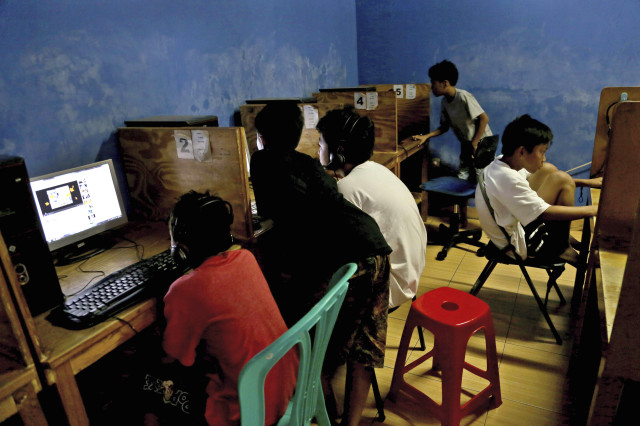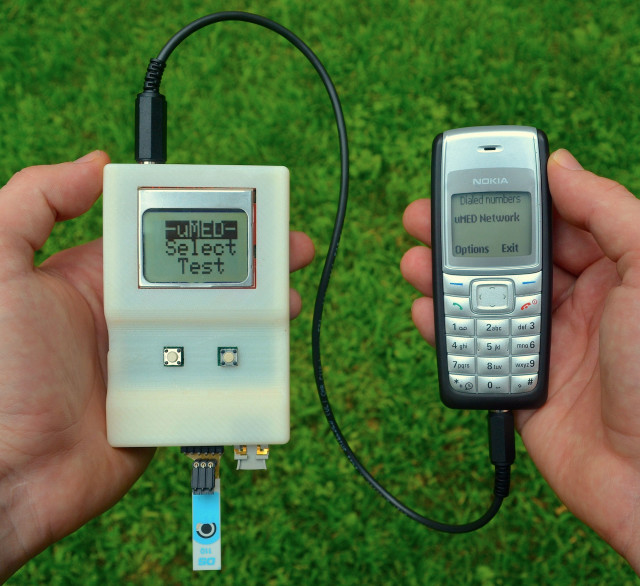Posted September 26th, 2014 at 2:09 pm (UTC-5)

Indonesian youths browse their social media accounts at an Internet cafe in Jakarta, Indonesia, Dec. 23, 2013. (AP)
Social media has become an integral part of people’s lives; and nowhere is this more true than in Indonesia, where some of the world’s most prolific Twitter and Facebook users have found new ways to harness the power of social media.
Despite “low and slow” Internet penetration, journalist Uni Lubis, who served as commissioner of the Indonesian Press Council between 2010 and 2013, says social media has provided Indonesia’s “caring and communal society” with a new platform for group hangouts and political discussions. She says active users, typically between the ages of 15-19, engage extensively on social media and use it as a “main source of information.”
Jenifer Sunrise Winter, Graduate Chair of the School of Communications at the University of Hawaii at Manoa, says Indonesia’s younger voters, people in urban areas and what she calls the “emerging middle class” turned to social media to track corruption and create space for political debate during the country’s July presidential election, producing copious tweets and posts to Facebook and other social media.
And they went a step further, says Lubis, becoming the first in the world to use crowdsourcing to count ballots and watch over the process to ensure its integrity.
Political candidates were happy to get online, says Winter, because their absence could have hurt their campaigns among the country’s substantial younger voters.
By taking advantage of the same social media tools, politicians and celebrities contributed to the success of social media in Indonesia, driving usage and adoption rates by other people higher, says social media blogger Sree Sreenivasan, Chief Digital Officer at New York’s Metropolitan Museum of Art.
But the real trend-setters are the young. “Once young people adopt technology in a country like Indonesia, it has an infectious sense to it,” he said. “And it kind of moves upward as more people jump onto it. And young people get on it [at] an early age.”
Compared with other countries, Indonesia is “a very young nation in terms of its median age and age distribution,” said Winter. “So like you have only a very small percentage of the population that’s over 65 … Compare that with somewhere like Japan, where I think about a quarter of the population is 65 or older.”
The power of mobile
Indonesia’s social media penetration, hovering around 80 percent, would not have been possible without “the power of mobile and cellphones,” says Sreenivasan. Poorer countries and many parts of Asia have much higher adoption rates because people are bypassing slow or non-existent landlines and moving directly to mobile.
Some of Indonesia’s major urban areas are wirelessly connected. And the country’s cellphones are data-enabled to connect to the Internet, says Sreenivasan, in contrast with India, for example, where most of the nation’s 950 million cellphones cannot connect to the Internet.
But laying down fixed broadband cables throughout the country’s thousands of islands would be “prohibitively expensive,” says Winter, compared to well-off countries like Japan, Singapore or South Korea, which boast very strong fixed line infrastructure and significant wireless capacity.
Indonesia’s social media enthusiasm caught the attention of Twitter, which is opening an office in Jakarta this year. According to the Jakarta Post, the Indonesian capital is the world’s most active Twitter city, surpassing London and Tokyo.
“Indonesia is one of the great social media capitals of the world,” said Sreenivasan. “It, along with Brazil, is a place where they really have embraced social [media] and Twitter in particular, as well as Facebook and other tools long before they became mainstream in the West or at least in greater numbers than in mainstream in the West.”
And 2015 promises to be a “blast,” says Lubis, as telecom operators launch faster LT/4G connections, which will push social media engagement further and open the door for more YouTube participation.


